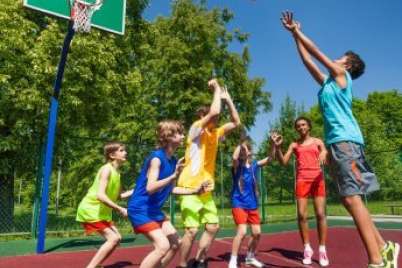
Hockey Québec at the leading edge of the sport with “Building an Athlete” program
Last January we published an article that stated the need for a new normal in hockey. The article, which struck a nerve with many hockey parents and coaches, highlighted our belief that hockey has to change so that kids are taught the right thing at the right time in their development.
Hockey Canada is committed to improving how hockey is brought to kids, something that is demonstrated by their long-term player development (LTPD) pathway as well as their partnership with us in a series of endeavors like this postcard to educate parents. But one of the most innovative organizations in improving the game could well be Hockey Québec.
I recently talked to Yves Archambault, technical director of Hockey Québec, about what they are doing to improve hockey in his province. With great passion he shared the evolution that his provincial branch went thru over the last few years to arrive at their current “Building an athlete” program.
“Hockey Québec submitted it’s first Long Term Player Development model back in 2001. For eight years, the model served primarily as an analytical and decision-making framework”, said Archambault. “The impact of our first LTPD was not great at the grassroots of hockey because it was too heavy and too bulky.”
Based on the knowledge gained, Hockey Québec simplified their approach to generate a greater impact. In 2009 they identified four priorities to maximize player development:
- Improving players physical training
- Improving players ability in 1 vs. 1 battles
- Improving players speed and skills
- Improving players ability to compete
According to Archambault the results were immediate. “We felt a breath of fresh air and a much greater understanding and application on the ice.”
The lessons from the 2009-2013 planning cycle were evident. “On the hockey side, the most athletic and skilled players were making it to the elite level and with a reduced risk of overuse injury,” said Archambault. “On the human side we realized the approach lead to more balanced players that kept on playing hockey longer.”
Building athletes rather than just hockey players
These successes led to Hockey Québec’s present three-year plan: “Building an athlete” (BA).
There’s no ambiguity here. When you endeavor to build athletes rather than just hockey players, you clearly state that you will help players develop more than their hockey skills. You also commit to help them improve a series of components such as their overall athletic abilities, nutrition, mental game, and physical conditioning.
The BA program targets the province’s entire minor hockey elite in an integrated structure called “ligue d’excellence”. The league includes all elite teams from peewee and bantam “AA” and “AAA” as well as the midget “espoir” and “AAA” divisions.
And all bantam and midget elite programs are integrated within a sport-study program.
“If you play elite bantam or midget hockey, you play within a school structure,” Archambault said proudly. “This makes it easier to insure kids keep up on the academic front and it also allows the integration of practices, dry-land training, and classroom sessions within a reasonable schedule.”
I asked Archambault how the BA program was received by coaches and parents.
“Very well amongst the elite hockey programs. It actually led coaches to elevate their knowledge, expertise, and to structure and deliver development programs that are better for the players,” Archambault responded.
Hockey Québec truly “walks the talk” of their new program. In their annual training plan for each level, they include a period in June called “stop hockey” and “transition to other sport”. This supports the importance of developing physical literacy and players with a broad athletic base.
Don’t look to the past, see into the future
The media reacted a bit differently to the new program.
“They keep looking to the past,” said Archambault. “They look at the number of players drafted in the NHL. They put too much emphasis on the short term. Building an athlete takes 10 years. Instead they should look at the rising number of Québec players making it to the Canadian elite.”
If it’s any indication of the success of the new approach, 23 percent of the players named to the current Canadian under-17 teams, were from Québec. Meanwhile, only 17 percent of minor hockey players in the country come from that province.
Archambault says that one of the most important lessons he learned came from Charles Cardinal, one of the architects of the long-term athlete development model.
“Between the ages of 14 and 17 is when you can build or destroy an athlete. Only one percent will make it to the higher level, but we want 100 percent to remain players for life.”
The new approach in Québec seems to lead to better players, but it also leads to better overall development of the person. When players were surveyed, 99 percent within the integrated elite structure stated that they were happy with the new program.
The BA program is one of the most concrete demonstrations of how a “new normal” is possible in hockey.
Hockey parents across Canada, what can we learn from the Québec experience?






Is there an english version of their three-year “Building an athlete” plan?